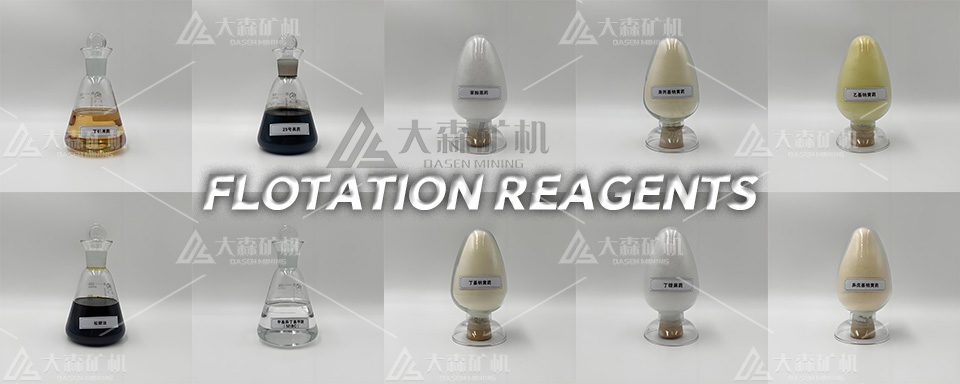Why Are Flotation Reagents Essential for Effective Gold Separation?
The gold flotation process is a cornerstone of modern mineral processing, offering precise control and high efficiency in separating gold and other valuable minerals. This process is highly valued for its ability to effectively utilize flotation reagents, allowing for the selective separation of minerals according to specific requirements and enabling comprehensive resource utilization.
The Role of Flotation Reagents
Flotation reagents are the most versatile, effective, and convenient tools for controlling mineral flotation behavior. They are available in a wide range of organic and inorganic compounds, acids, bases, and various salts.
These reagents are typically classified based on their primary functions:
1.Collectors
Collectors are organic substances that selectively interact with mineral surfaces, making them hydrophobic. This increased hydrophobicity causes ore particles to strongly adhere to air bubbles and float to the surface. Common collectors include:
Non-ionic: kerosene, diesel, xanthate, hydrocarbyl thiocarbamate.
Anionic: xanthate, black medicine, oleic acid, sodium hydrocarbyl sulfate.
Cationic: mixed amine, lauric acid.
2.Frothers
Frothers are surface-active substances that disperse air into small bubbles at the water-air interface. They prevent bubble coalescence and enhance bubble stability during mineralization and flotation. Examples include:
Surfactants: butyl ether oil, terpineol oil, mixed alcohol, ether alcohol oil.
Non-surfactants: diacetone alcohol oil.
3.Regulators
Regulators adjust the interaction between other reagents (primarily collectors) and mineral surfaces, modify pulp properties, and improve flotation selectivity. They are further categorized into:
Activators: Inorganic salts like copper sulfate and sodium sulfide that enhance the interaction between collectors and minerals, improving floatability.
Inhibitors: Agents like sodium sulfide, water glass, tannin, and starch that reduce mineral floatability by weakening the collector’s effect.
pH Adjusters: Dilute sulfuric acid, sodium hydroxide, and sodium bicarbonate adjust the ore pulp’s properties to favor the flotation of certain minerals.
Dispersants and Flocculants: These adjust the dispersion, agglomeration, and flocculation of fine mud in the slurry. Flocculants include lime, alum, starch, and polyacrylamide, while dispersants include water glass, soda, and various polyphosphate.
The gold flotation process relies heavily on the strategic use of flotation reagents to achieve efficient mineral separation. By understanding the diverse functions and classifications of these reagents, operators can optimize their processes to meet specific mineral processing needs, ensuring both economic and environmental benefits.
Dasen mining provides free customized solution maintenance & installation guide after-sales service overseas. if you need a gold flotation reagents quotation, kindly send a WhatsApp message to me:Whatsapp:+86 133 1927 7356
Email:[email protected]

